[Himeji City] “Japan Toy Museum” A museum that conveys disappearing toys to the future
![[Himeji City] “Japan Toy Museum” A museum that conveys disappearing toys to the future](https://resources.matcha-jp.com/resize/720x2000/2023/12/22-159058.webp)
The Japan Toy Museum will celebrate its 50th anniversary in 2024. Despite being located in the Koderamachi area, which is full of private houses and rice fields, it has been awarded two stars in the Michelin Green Guide.
-
Table of Contents
- Great value bus tickets
- The second most amazing facility in Himeji: Japan Toy Museum
- 50 years worth of dramatization
- Highlights of the Japan Toy Museum
- Enjoy the special exhibitions four times a year
- The future of the Japan Toy Museum
- Access to Japan Toy Museum
- basic information
Great value bus tickets
Hyogo Amazing Pass
If you are considering traveling around Hyogo Prefecture, including Himeji and Kobe, we recommend this ticket! This mobile ticket allows unlimited rides on Shinki Bus local buses and Kobe's City Loop/Port Loop for 2,500 yen per day.
Luggage storage service
Finally, why not take a leisurely and convenient tour?
The second most amazing facility in Himeji: Japan Toy Museum
![[Himeji City] “Japan Toy Museum” A museum that conveys disappearing toys to the future](https://resources.matcha-jp.com/resize/720x2000/2023/12/22-159059.webp)
The Michelin Guide was created to make driving safer and more enjoyable. In the Michelin Green Guide Japan, Revised 4th Edition (2016), Himeji was the only place awarded three stars (★★★) that were "worth the trip," and the only one was the World Heritage Site and National Treasure Himeji Castle. And there was also only one place awarded two stars (★★) that were "worth a detour."
I would like to introduce the Japan Toy Museum. Incidentally, the three places that were selected as one star (★) for "interesting" were the well-known "Koukoen Gardens at the Former Western Residence of Himeji Castle," "Shoshazan Engyo-ji Temple," and "Himeji City Museum of Art." I think you can see how amazing it is that the Japan Toy Museum was selected as two stars.
What has earned it such a high reputation is the number of items in its collection and its focus. Although it is a privately run museum, it boasts a total of approximately 90,000 items, including more than 50,000 domestic items and more than 30,000 foreign items from 160 countries and regions, with over 5,000 items on display at any one time in six exhibition facilities.
How has the museum been able to collect so many toys? The driving force behind this can be said to be the sense of mission of museum director Shigeyoshi Inoue (born January 1939) to "preserve and display local toys that are not valued as cultural assets and are disappearing," and his sense of crisis that "cultural assets related to children and women are not being valued."
In addition to the materials collected by the director himself, the museum has expanded to its current size through donations from people who shared his vision.
50 years worth of dramatization
The Japan Toy Museum began as the Inoue Local Toy Museum, which Director Inoue opened in 1974 at the age of 35 by renovating a room in his newly built home. This was nine years before the Prefectural Museum of History and the Municipal Art Museum were built in Himeji.
At the age of 24, while working for a railroad company, he happened to come across a book called "Japanese Folk Toys" (1962, written by Ryosuke Saito, published by Miraisha), which made a deep impression on him. He began to collect folk toys that had been created by our ancestors for their children (adorable cultural assets of our people that sprouted and blossomed in this land), and opened them to the public as the "Inoue Folk Toy Museum."
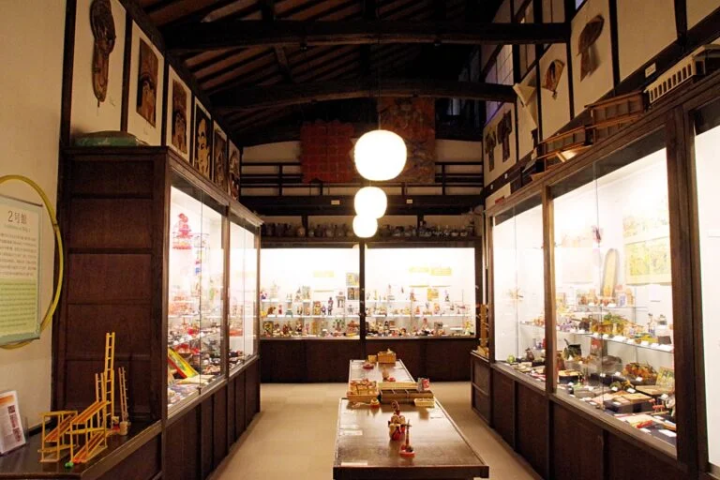
The museum, which is open free of charge only on weekends and is run by an ordinary salaryman, attracted a lot of attention, including being broadcast nationwide on NHK, and many visitors came. However, the 15-meter-wide display case was not enough to satisfy the demand for more, so he designed it himself and enlarged it (the current No. 1 building) with the help of local carpenters.
Since then, it has been expanded several times, and in 1989 it was expanded to Building No. 6, with the display cases extending to approximately 180 meters.

It seems that a lot has happened up until now. When he was an employee, he would collect things on his days off. He would go to local locations to interact with collectors and researchers, and track down the makers of toys that were thought to be extinct, and work steadily to spread the word about them to the public.
One example is the efforts made to restore bags and small boxes in the shape of dolls, animals, flowers, etc., made by women in the Edo period using leftover fabric after sewing kimonos, and "sewing small items" that were used as toys and children's charms in the Meiji period, as "crepe crafts" (a name given by Director Inoue).
![[Himeji City] “Japan Toy Museum” A museum that conveys disappearing toys to the future](https://resources.matcha-jp.com/resize/720x2000/2023/12/22-159066.webp)
In 1979, he held the "World Toys Exhibition" to coincide with the International Year of the Child, which was a huge hit. This was the impetus for him to focus on collecting toys from around the world. In 1984, at the age of 45, he retired from his company and began to run the museum in earnest, renaming it the "Japan Toy Museum."
The number of visitors increased every year, reaching 79,000 in 1991. At the time, the population of Kojicho was around 20,000, so the number of visitors was nearly four times the population. At that time, there were many collectors, and it can be seen that local toys were very popular.
In addition to his collecting activities, he has lived an incredibly powerful life, working with curator Ozaki Orime and others to publish books that compile his collection, including "Hyogo's Local Toys" (by Inoue Shigeyoshi, published by the Kobe Shimbun General Publishing Center in 1981), "Illustrated Guide to Interesting Toys in Japan and the World" (by Inoue Shigeyoshi and Ozaki Orime, published by the Kobe Shimbun General Publishing Center in 2017), "Folk Craft Toys of the World" (by Ozaki Orime, published by Daifuku Shoten in 2020), which compiles rare toys from before China's Cultural Revolution, "Chinese Folk Toys" (by Ozaki Orime, published by Daifuku Shoten in 2022), and instructional books on crepe crafts.
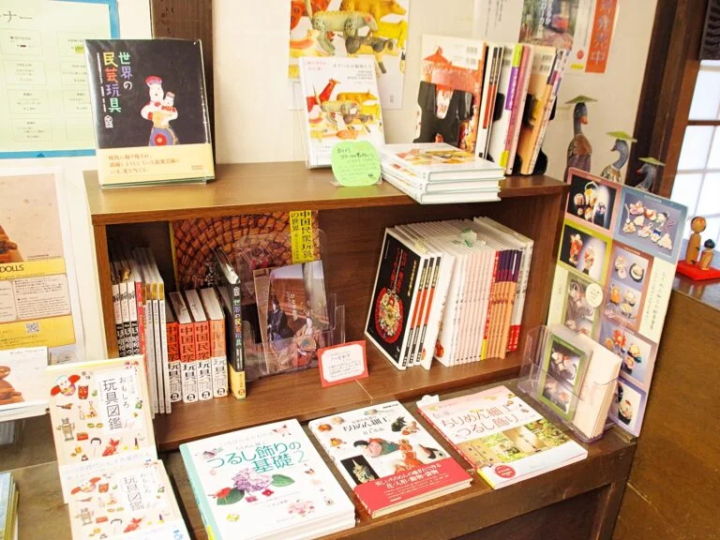
In 1998, it was certified as a "museum equivalent facility," one of only a few privately run museums in the country, and in 2016 it received two stars in the Michelin Guide, and has continued to receive recognition from numerous organizations to this day.
As a private museum, it has been called a "miracle museum" for having been operated and loved for so long. Although it is privately owned, Director Inoue says he wants to pass them on to future generations, saying, "I don't think of the materials in our collection as private property, but rather as cultural heritage that should be protected by society."
Highlights of the Japan Toy Museum
The interesting thing about the Japan Toy Museum is that each visitor has their own highlights. Many museums convey a direct message of "this is what we want you to see," but the Japan Toy Museum is like a collection of encyclopedia indexes. You can enjoy the museum from any angle, whether it's the era, region, or type you want to see.
The ways in which it can be used are endless: it brings back nostalgia for older people, young people discover new things among old items, people who want to learn about foreign cultures, foreign visitors who want to learn about Japanese culture, and inspiration for people studying history or design.
In fact, some people visit Himeji just to visit the Japan Toy Museum, not Himeji Castle, and tourists from overseas visit the museum every day. The exhibition facilities are Halls 1 and 6, which are special exhibitions. Hall 2 is dedicated to "Candy Store Toys and Modern Toys," and displays tin and celluloid toys, as well as character toys that are still loved today.

Hall 3 is "The World of Traditional Handicrafts." It displays valuable materials on traditional Japanese crafts such as crepe paper crafts, handball crafts, and bottle crafts that have been passed down since ancient times by Japanese women.

Building 4 is a two-story building, with "Japanese local toys" on the first floor and "toys from around the world" on the second floor, organized by region. For example, in the "Japanese local toys" section, you can see the differences between each region, such as daruma dolls, kokeshi dolls, tops, papier-mâché, clay dolls, and kites.
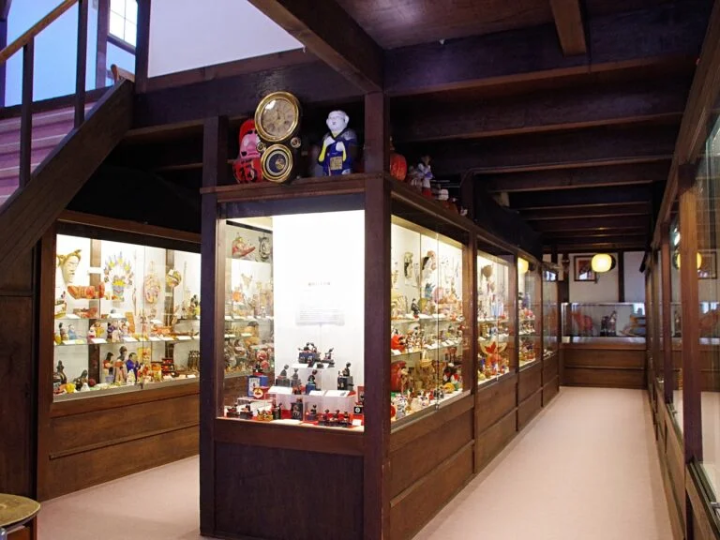

"Toys from around the world" has interesting things to offer, such as differences in design. Even though there are differences in color and shape, there are some things that can be found in common with Japanese toys, and the fun can be expanded by changing the way you look at it.
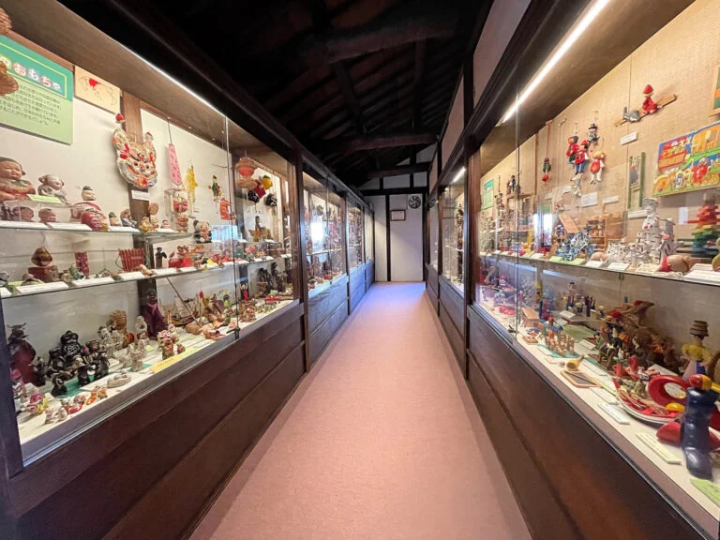
Building 5 is the "Lamp House" and can be used mainly as a rest area. You can bring your own lunch (please inquire in advance as it may be used for events, etc.). There is also a rest area next to Building 6.
There is good news for those who have been there many times. The lighting in the museum will be changed to LED in October 2023. This will allow the exhibits to be viewed in more vivid colors.
Enjoy the special exhibitions four times a year
One of the joys of the Japan Toy Museum is the special exhibitions and planned exhibitions. Many fans look forward to the special exhibitions held four times a year in Building 6 in particular.
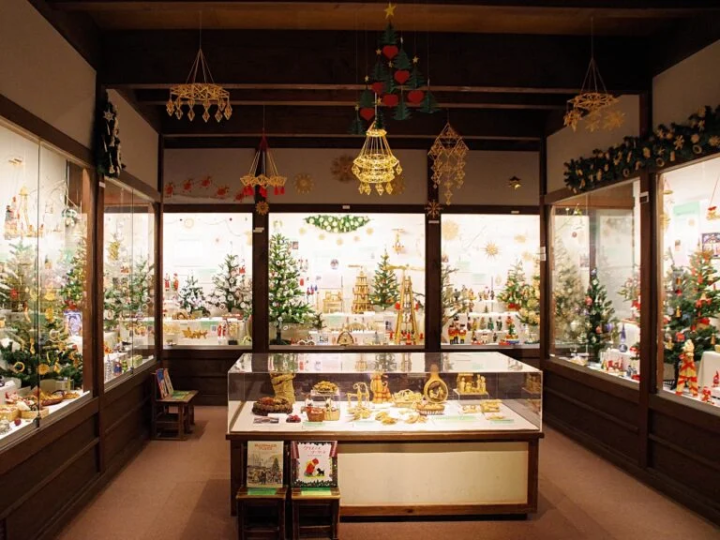
Three of the four times a year, the museum holds elaborate exhibitions for the standard "Winter Christmas," "Spring Doll's Festival," and "Tango no Sekku" in May, and from summer to autumn, it holds special exhibitions focusing on specific regions. The person in charge of the exhibitions, including these permanent exhibitions, is curator Ozaki Ayame. She is also in charge of workshops, traditional toy classes, and publishing activities, and is known for her deep insight into toys and entertaining commentary.
A special exhibition titled "Winter Special Exhibition: Christmas Around the World - Forms of Joy" will be held from Saturday, November 11, 2023 to Sunday, January 28, 2024. There will be about 1,000 exhibits. It's an opportunity to learn what Christmas is like around the world. It's a highly recommended experience for those who only know about Christmas in Japan.
One exhibit that is particularly noteworthy this time is the "Tree of Life Candlestick" (Mexico). This sculpture symbolizes prosperity and fertility, and is a fusion of ancient Mexican folklore, which says that there is a pillar-like tree that connects the heavens and the underworld, the world of the gods and the world of humans, and the Christian worldview.
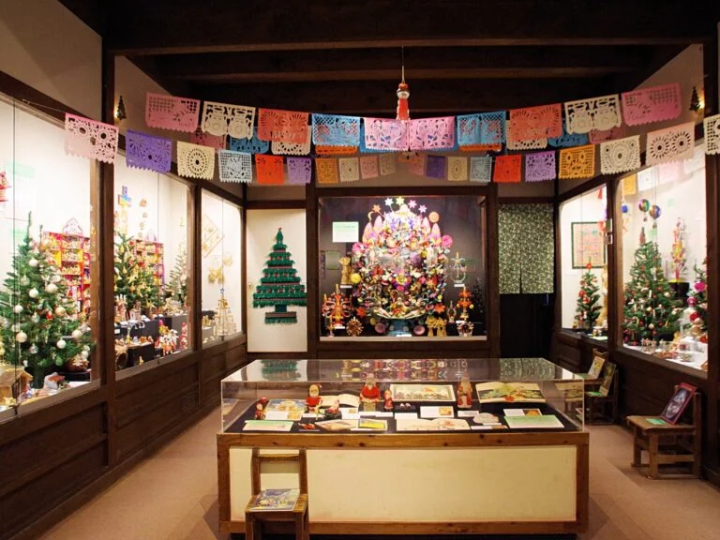

This exhibition explores what Christmas is, and through the trees and ornaments, you can learn that it is not just the celebration of the birth of Jesus Christ, but a festival held all over the world that combines local harvest festivals and other festivals.
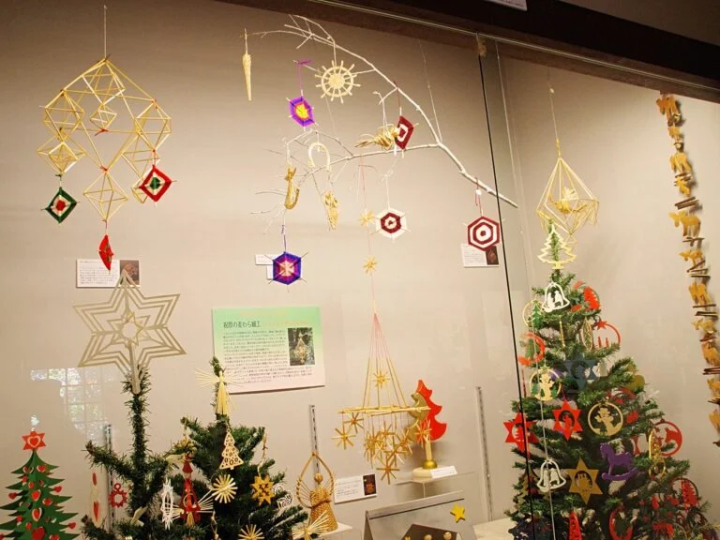
The future of the Japan Toy Museum
The Japan Toy Museum has a large collection of items. It seems that the museum is moving from an era of collecting to an era of utilizing them.

Within the museum, there are several areas where visitors can actually touch tops and other wooden toys, and it is common to see people of different generations enjoying time together, with nostalgic adults and children playing enthusiastically.
These wooden toys have become rare these days, and the local toy sales section in the museum is lined with products from manufacturers that are no longer in business.
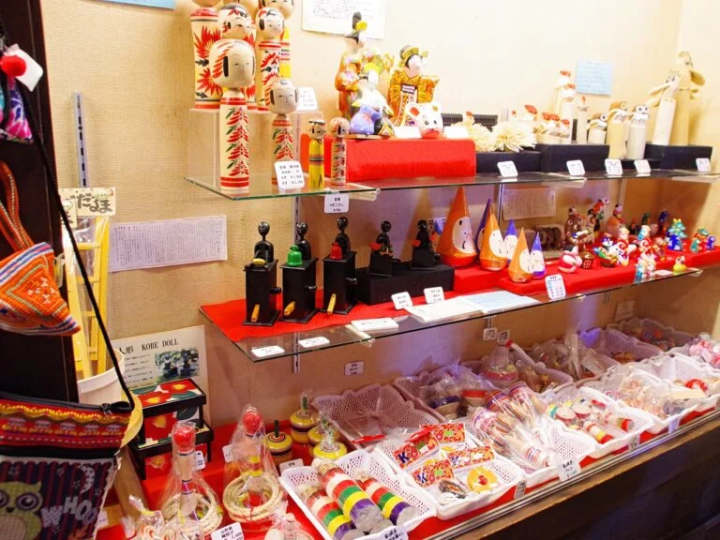
They are also working on new ways to display the collection. For example, they are using two-dimensional barcodes to make the exhibits move, allowing you to watch videos. Once you find one, you'll want to see more and more, expanding the world of toys to enjoy.
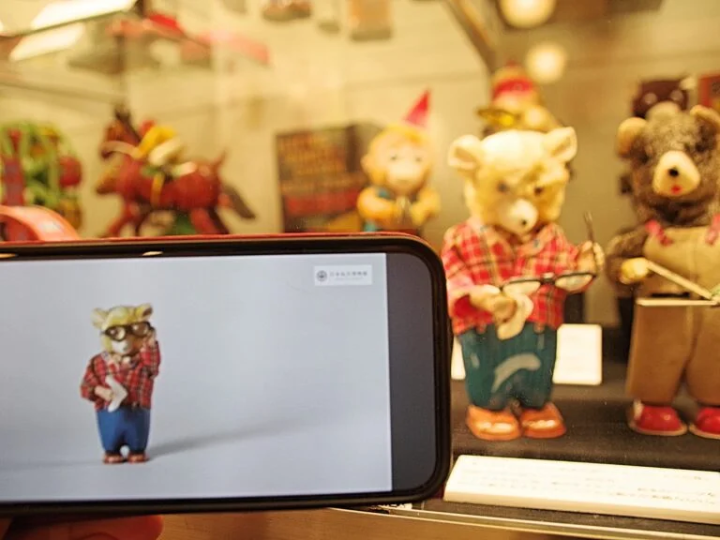
We are currently in an era where museums across the country are in a noticeable decline. The Japan Toy Museum, which once had nearly 70,000 visitors, has seen a yearly decline in visitor numbers, falling to less than 10,000.
A private museum that cannot receive subsidies like public museums needs the support of many fans to continue operating. Experience the charm of the Japan Toy Museum once. You will surely want to tell someone about it.
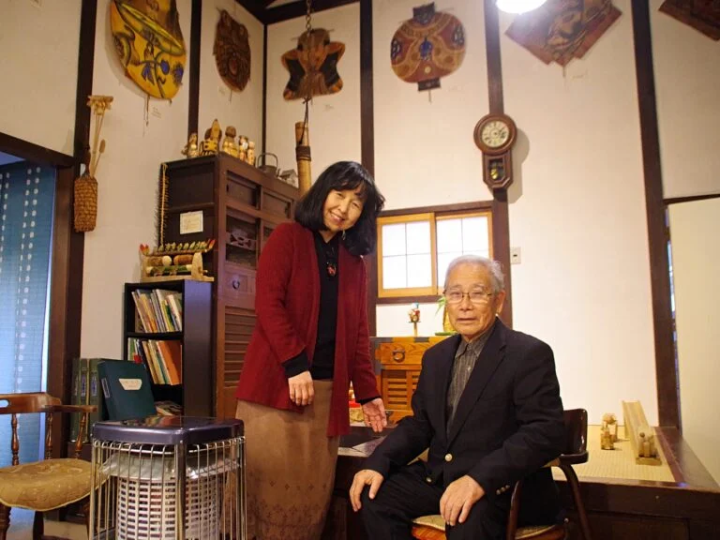
Access to Japan Toy Museum
The Japan Toy Museum is located in an old residential area, but as National Route 312 and the JR Bantan Line run parallel from north to south, it is relatively easy to access as long as you know the way from the side roads. If you come by car, there is a parking lot where tour buses can be parked, and parking for 30 regular cars is also available.
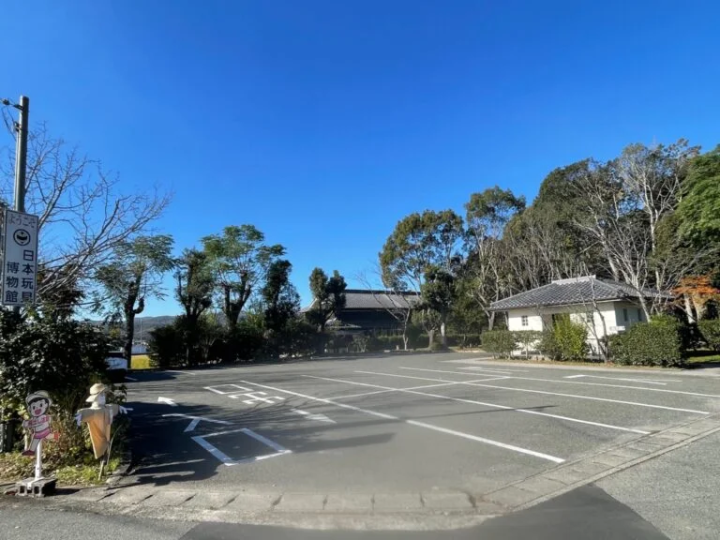
If you are traveling by train, get off at Karo Station on the JR Bantan Line and walk east for about 15 minutes. To get there, just walk straight. There are signs everywhere, so you won't get lost. If you take a taxi from the station, the minimum fare is 700 yen.
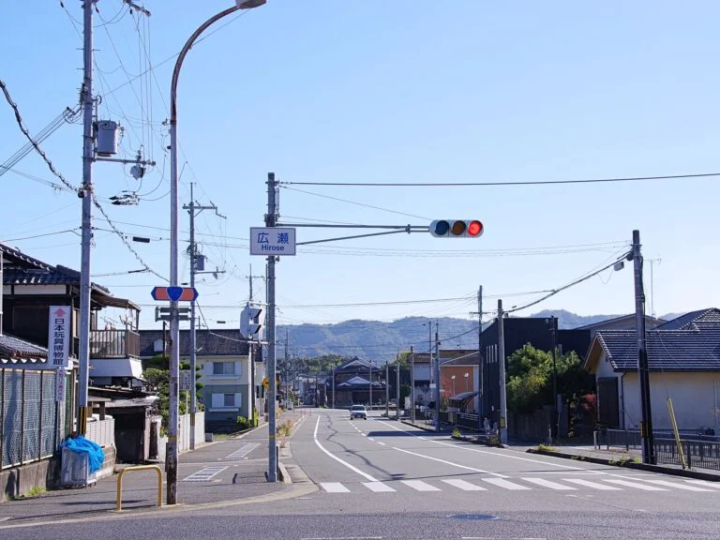
The nearest bus stop is the "Karo Ekimae bus stop" on the Shinki Bus Route 84 bound for Fukusaki Station. The fare from the north exit of Himeji Station (Platform 7) is 540 yen. However, please note that there are few buses, with only three buses a day on weekends and holidays (two on the way back) and two on weekdays.
(Writer: Ryuji Tsukamoto)
*This article is current as of November 2023. Prices include tax. Product contents and prices may be subject to change.
basic information
Japan Toy Museum
Address: 671-3 Nakanino, Kojicho, Himeji City, Hyogo Prefecture
Phone number: 079-232-4388
Opening hours: 10:00-17:00
Closed: Wednesdays (open on public holidays), New Year's holidays (December 28th to January 3rd)
Access: (Train) 15 minutes on foot from JR Bantan Line, Karo Station (signboards at various points from the station) (Car) Approximately 5 minutes west from the "Funazu" ramp on the Bantan Link Road, approximately 15 minutes south from the "Fukusaki" IC on the Chugoku Expressway (Bus) 12 minutes on foot from the "Karo Ekimae" bus stop on Shinki Bus Route 84 bound for Fukusaki Station
Parking: Available (approximately 30 cars free)
Official website: https://japan-toy-museum.org
Note: Membership is currently being accepted for the Friends' Club: Annual fee: 2,000 yen, free admission with membership card, and information on special exhibitions and events
What are good things and good experiences? There are many characteristics such as having a story to tell, overflowing with the thoughts of the creator, having a history, and being loved by the locals. Have you ever come across a special thing or experience that made you want to tell someone about it? And as a result of telling, someone new leads to something. We think that's what "good" is all about. In order to deliver such encounters to our customers, we discover Hyogo's good things based on the concept of "talk, communicate, and connect", and provide information that will shorten the emotional distance between customers and the region of Hyogo Prefecture.
The contents on this page may partially contain automatic translation.


![[Hyogo Prefecture] Unlimited rides on local buses for just 2,500 yen! Travel around Hyogo Prefecture at a great price](https://resources.matcha-jp.com/resize/200x2000/2023/09/25-146913.webp)
































![[Just a short distance from Nagoya] Popular Taiwanese YouTuber Alan tours Aichi, Tokoname!](https://resources.matcha-jp.com/resize/720x2000/2026/01/08-255181.webp)

